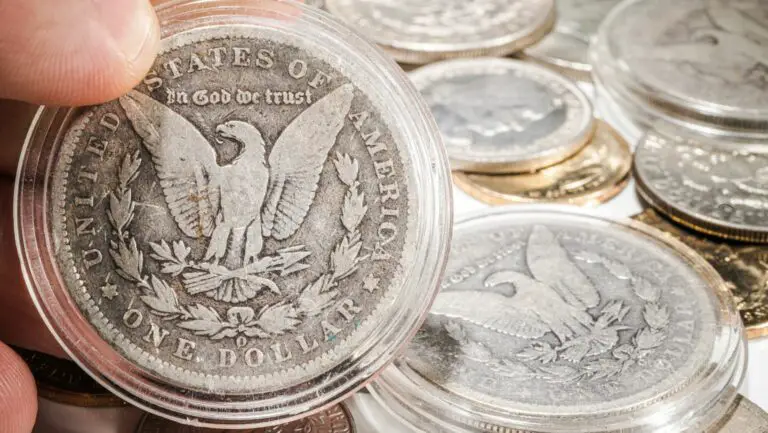
In 1941, Germany under the Third Reich issued the 10 Reichspfennig coin, a piece of history that holds both monetary and historical value. The design of the coin reflects the ideology and symbolism of the Nazi regime, making it a fascinating piece for collectors and historians alike.
With its intricate details and distinct markings, the 1941 Germany Third Reich 10 Reichspfennig coin provides a glimpse into a tumultuous period in world history. Understanding the significance of this coin goes beyond its monetary worth, delving into the political and social climate of the time.
Join us as we explore the story behind the 1941 Germany Third Reich 10 Reichspfennig coin, uncovering the secrets and symbolism embedded in this artifact from the past.
Historical Background of Germany in 1941
In 1941, Germany was under the rule of the Nazi Party, led by Chancellor Adolf Hitler. Germany was deeply entrenched in World War II, with the invasion of the Soviet Union in full swing. The year marked a turning point in the war as Germany faced challenges on multiple fronts, including in North Africa and the Balkans.
The Nazi regime exerted strict control over every aspect of life in Germany, imposing ideologies that promoted Aryan supremacy and anti-Semitism. The year 1941 was particularly significant as it witnessed the implementation of the “Final Solution,” the systematic genocide of six million Jews during the Holocaust.
Life in Germany during this period was characterized by propaganda, censorship, and strict surveillance. The regime utilized a strong propaganda machine to manipulate public opinion and strengthen support for its policies. Furthermore, the war effort demanded significant sacrifices from the German population, leading to shortages of essential goods and rationing.
Amidst these challenges, the 10 Reichspfennig coin circulated as part of the currency system. The coin not only served as a medium of exchange but also reflected the ideology and symbolism of the Nazi regime, reinforcing its propaganda and control over the population. Exploring artifacts like the 1941 Germany Third Reich 10 Reichspfennig coin provides valuable insights into the historical context of that turbulent period.
Establishment of the Third Reich
When Adolf Hitler was appointed Chancellor of Germany in 1933, it marked the beginning of the Third Reich, a period of totalitarian rule that lasted until 1945. The establishment of the Third Reich brought about significant changes in German society, with the Nazi Party consolidating power through propaganda, censorship, and the suppression of dissent.
Under Hitler’s leadership, the Nazi regime implemented policies aimed at national unity and the purification of German culture. This included the promotion of anti-Semitic beliefs and the persecution of minority groups deemed undesirable by the regime. The ideology of racial superiority and the concept of the “Aryan race” were central to the regime’s policies and propaganda efforts.
One of the key aspects of the Third Reich’s consolidation of power was the elimination of political opposition and the centralization of authority under Hitler’s leadership. The enabling laws passed in 1933 gave Hitler virtually unlimited power, enabling him to bypass the democratic process and establish a dictatorship.
Throughout the 1930s, the regime worked to rebuild Germany’s economy and military strength, laying the foundation for future expansionist policies. The invasion of Poland in 1939 marked the beginning of World War II, leading to subsequent military campaigns and the occupation of several European countries.
The 10 Reichspfennig coin minted during this period served not only as a form of currency but also as a tool for propaganda and indoctrination. The imagery and symbolism on the coin reflected the Nazi ideology, promoting concepts of nationalism, militarism, and loyalty to the Fuhrer. This coin provides a tangible connection to the turbulent historical context of 1941 Germany under the Third Reich.
Introduction of the 10 Reichspfennig Coin
In 1941, the Third Reich in Germany introduced the 10 Reichspfennig coin as part of its propaganda efforts to promote nationalism, militarism, and loyalty to Hitler. This coin, minted with an eagle carrying a swastika on one side, symbolized the ideology of the Nazi regime.
The 10 Reichspfennig coin was circulated during a period when Germany was at war, serving as a tool for spreading Nazi propaganda and fostering a sense of unity among the population. Through its design and inscriptions, the coin aimed to instill pride in the military achievements of the Third Reich and reinforce the image of Hitler as a national hero and savior.
As a common denomination in circulation, the 10 Reichspfennig coin was widely used in daily transactions, ensuring that the ideals of the Nazi regime were constantly reinforced in the minds of the German people. Its ubiquity made it a significant part of the economic and propaganda machinery of the Third Reich, further consolidating the regime’s hold on public consciousness and collective identity.
The symbolism of the 10 Reichspfennig coin extended beyond its monetary value, reflecting the deep-seated ideological foundations on which the Third Reich was built. By examining the design and purpose of this coin, we can gain insight into the propaganda tactics employed by the Nazi regime and the extent of its influence on German society during this tumultuous period.
Design and Symbolism of the Coin
Exploring the design and symbolism of the 1941 Germany Third Reich 10 Reichspfennig coin provides valuable insights into the propaganda strategies of the era. The coin’s obverse features an eagle clutching a swastika, emblematic of the Nazi regime. This imagery aimed to promote nationalism and loyalty, reinforcing the ideals of the totalitarian state.
The reverse of the coin displays the denomination “10” and “Reichspfennig,” encapsulating the economic significance of the currency. The intricate detailing on the coin underscores the regime’s attention to aesthetics and propaganda, using currency as a medium to disseminate its ideologies.
Furthermore, the utilization of the eagle, a symbol traditionally associated with strength and power, served to elevate the image of the Nazi party and glorify its leadership. The inclusion of the swastika, an ancient symbol repurposed by the Nazis, underscored their desire to indoctrinate the masses and solidify their control over society.
Through this meticulously crafted design, the 10 Reichspfennig coin became more than a means of transaction; it became a propagandistic tool, subtly influencing public perception and reinforcing allegiance to the Third Reich’s ideals.
Significance and Controversies Surrounding the Coin
In examining the 1941 Germany Third Reich 10 Reichspfennig coin, it’s crucial to delve into its significance and the controversies that surround it. This coin, with its imagery of an eagle clutching a swastika, holds historical significance as a tool used for propaganda during the Third Reich era.
The symbolism depicted on the coin was carefully crafted to promote nationalism and loyalty to the totalitarian state. However, this imagery also sparked controversies, as the swastika is now widely recognized as a symbol of hate and oppression due to its association with the Nazi regime.
Despite its artistic value and historical importance, the 1941 10 Reichspfennig coin continues to evoke mixed reactions. Some view it as a reminder of the dark chapters in history, while others see it as a collectible item that represents a bygone era.
The intricate design and message conveyed by the coin raise questions about the ethics of collecting and displaying such items. As we reflect on the significance and controversies surrounding this coin, we are reminded of the power of visual symbols in shaping perceptions and ideologies.
Key Takeaways
- The 1941 Germany Third Reich 10 Reichspfennig coin reflects the ideologies and propaganda of the Nazi regime during World War II.
- The coin served as a tool for promoting nationalism, militarism, and loyalty to Adolf Hitler through its design and inscriptions.
- It provides valuable insights into the historical context of Germany under the Third Reich, highlighting the propaganda tactics used during that turbulent period.
- The symbolism on the coin, including the eagle and swastika, holds significance and controversies due to its association with the Nazi regime.
- Collecting and displaying such artifacts raise ethical questions about commemorating a dark chapter in history versus viewing it as a historical collectible piece.
Conclusion
In wrapping up, the 1941 Germany Third Reich 10 Reichspfennig coin serves as a poignant reminder of the complex interplay between history, propaganda, and ethical considerations. Its imagery, while designed to promote allegiance to the totalitarian regime, now stands as a symbol of the dark chapters of the past. The debates surrounding the coin underscore the importance of critically examining historical artifacts and the narratives they convey. As we navigate discussions on the implications of such relics, we are reminded of the enduring impact visual symbols hold in shaping societal beliefs. The coin’s story prompts us to reflect on the lessons of history and the responsibilities that come with preserving and interpreting artifacts from tumultuous periods.
Frequently Asked Questions
What is the significance of the 1941 Germany Third Reich 10 Reichspfennig coin?
The coin holds historical importance as a propaganda tool under the Third Reich, aiming to foster nationalism and loyalty through its imagery.
Why is the 1941 Germany Third Reich 10 Reichspfennig coin controversial?
Controversies arise from the coin’s depiction of an eagle clutching a swastika, symbolizing the totalitarian regime and invoking debates due to the swastika’s association with hate and oppression.
What ethical questions are raised by collecting and displaying such coins?
Collecting and displaying such items raise ethical dilemmas concerning the preservation of history versus the perpetuation of symbols associated with atrocities.
How does the imagery on the coin reflect the power of visual symbols in history?
The coin’s imagery underscores the influence of visual symbols in shaping perceptions and ideologies, illustrating how objects can convey complex narratives and historical contexts.






